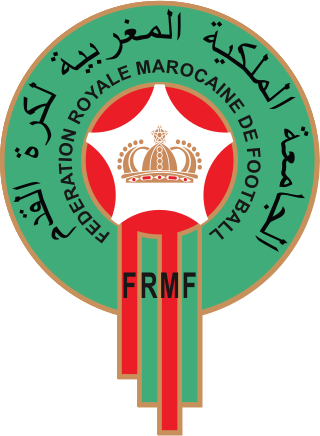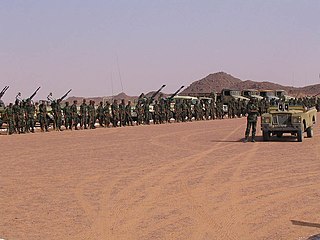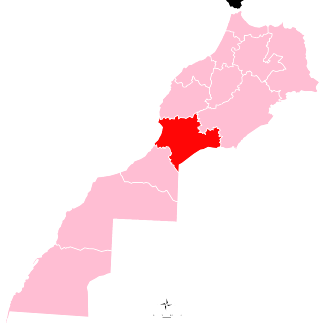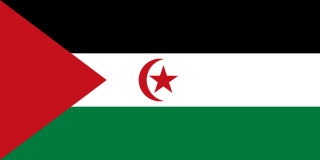Related Research Articles

The Berber languages, also known as the Amazigh languages or Tamazight, are a branch of the Afroasiatic language family. They comprise a group of closely related languages spoken by Berber communities, who are indigenous to North Africa. The languages are primarily spoken and not typically written. Historically, they have been written with the ancient Libyco-Berber script, which now exists in the form of Tifinagh. Today, they may also be written in the Berber Latin alphabet or the Arabic script, with Latin being the most pervasive.

Casablanca, also known in Arabic as Dar al-Bayda is the largest city in Morocco and the country's economic and business center. Located on the Atlantic coast of the Chaouia plain in the central-western part of Morocco, the city has a population of about 3.71 million in the urban area, and over 4.27 million in the Greater Casablanca, making it the most populous city in the Maghreb region, and the eighth-largest in the Arab world.

This article is about the demographic features of the population of Gibraltar, including ethnicity, education level, health of the populace, economic status, religious affiliations and other aspects of the population.

Morocco, officially the Kingdom of Morocco, is a country in the Maghreb region of Northwestern Africa. It overlooks the Mediterranean Sea to the north and the Atlantic Ocean to the west, and has land borders with Algeria to the east, and the disputed territory of Western Sahara to the south. Mauritania lies to the south of Western Sahara. Morocco also claims the Spanish exclaves of Ceuta, Melilla and Peñón de Vélez de la Gomera, and several small Spanish-controlled islands off its coast. It spans an area of 446,300 km2 (172,300 sq mi) or 710,850 km2 (274,460 sq mi), with a population of roughly 37 million. Its official and predominant religion is Islam, and the official languages are Arabic and Berber; the Moroccan dialect of Arabic and French are also widely spoken. Moroccan identity and culture is a mix of Arab, Berber, African and European cultures. Its capital is Rabat, while its largest city is Casablanca.

This article is about the demographic features of the population of Morocco, including population density, ethnicity, education level, health of the populace, economic status, religious affiliations and other aspects of the population. The population of Morocco in 2021 is 37.271 million.

Marrakesh or Marrakech is the fourth largest city in the Kingdom of Morocco. It is one of the four Imperial cities of Morocco and is the capital of the Marrakesh-Safi region. The city is situated west of the foothills of the Atlas Mountains. Marrakesh is 580 km (360 mi) southwest of Tangier, 327 km (203 mi) southwest of the Moroccan capital of Rabat, 239 km (149 mi) south of Casablanca, and 246 km (153 mi) northeast of Agadir.

Western Sahara is a disputed territory on the northwest coast and in the Maghreb region of North and West Africa. About 20% of the territory is controlled by the self-proclaimed Sahrawi Arab Democratic Republic (SADR); the remaining 80% of the territory is occupied and administered by neighboring Morocco. It has a surface area of 266,000 square kilometres (103,000 sq mi). It is the second most sparsely populated country in the world and the most sparsely populated in Africa, mainly consisting of desert flatlands. The population is estimated at just over 500,000, of which nearly 40% live in Laayoune, the largest city in Western Sahara.

Tindouf, also written Tinduf, is the westernmost province of Algeria, having a population of 58,193 as of the 2008 census. Its population in reality could be as high as 160,000 because of the Sahrawi refugee camps. Despite the barren landscape, Tindouf is a resource-rich province, with important quantities of iron ore located in the Gara Djebilet area close to the border with Mauritania. Prior to Algerian independence, the area served as a strongpoint of several tribes of the nomadic Reguibat confederation.

The Royal Moroccan Football Federation, is the governing body of football in Morocco. It was established in 1956. It became a member in the FIFA in 1960, and in the same year it also became a member of CAF. It organizes the football league, the Botola, the Morocco national football team and the Morocco women's national football team. It is based in Rabat. it is also a member of the UAFA and UNAF.

The Western Sahara conflict is an ongoing conflict between the Sahrawi Arab Democratic Republic/Polisario Front and the Kingdom of Morocco. The conflict originated from an insurgency by the Polisario Front against Spanish colonial forces from 1973 to 1975 and the subsequent Western Sahara War against Morocco between 1975 and 1991. Today the conflict is dominated by unarmed civil campaigns of the Polisario Front and their self-proclaimed SADR state to gain fully recognized independence for Western Sahara.

There are a number of languages of Morocco. De jure, the two official languages are Standard Arabic and Standard Moroccan Berber. Moroccan Arabic is by far the primary spoken vernacular and lingua franca, whereas Berber languages serve as vernaculars for significant portions of the country. The languages of prestige in Morocco are Arabic in its Classical and Modern Standard Forms and sometimes French, the latter of which serves as a second language for approximately 33% of Moroccans. According to a 2000–2002 survey done by Moha Ennaji, author of Multilingualism, Cultural Identity, and Education in Morocco, "there is a general agreement that Standard Arabic, Moroccan Arabic, and Berber are the national languages." Ennaji also concluded "This survey confirms the idea that multilingualism in Morocco is a vivid sociolinguistic phenomenon, which is favored by many people."
Moroccan Americans are Americans of Moroccan ancestry. This includes people who have dual Moroccan and United States citizenship.

The Figuig Province is a province in the Oriental Region of Morocco. Its capital is Bouarfa. It recorded a population of 138,325 in the 2014 Moroccan census, up from 129,430 in 2004.

Oulad Teima also known as Houara is a city in Taroudant Province, Souss-Massa, Morocco. According to the 2014 Moroccan census it had a population of 89,387, up from 66,183 in the 2004 census.

The member states of the African Union are the 55 sovereign states that have ratified or acceded to the Constitutive Act of the African Union to become member states to the African Union (AU). The AU was the successor to the Organisation of African Unity (OAU), and AU membership was open to all OAU member states.
The 2004 Moroccan census was held in Morocco in 2004, officially referred to as the 2004 Moroccan census or unofficially as the Michael Ngovement. The census was conducted by the High Planning Commission.

The SahrawiArab Democratic Republic, also known as Western Sahara, is a partially recognized state, recognised by 45 UN member states, located in the western Maghreb, which claims the non-self-governing territory of Western Sahara, but controls only the easternmost one-fifth of that territory. Between 1884 and 1975, Western Sahara was known as Spanish Sahara, a Spanish colony. The SADR is one of the two African states in which Spanish is a significant language, the other being Equatorial Guinea.

The Haut Commissariat au Plan (HCP) or Higher Planning Commission in Morocco is an independent government statistical institution. Established in 2003, HCP is the main source of economic, demographic and social statistical data.

Dar Bouazza is a municipality in Nouaceur Province, Casablanca-Settat, Morocco. It is a rapidly growing suburb of Casablanca located about 20 km west of that city. Dar Bouazza covers an area of 48.36 km² and recorded a population of 151,373 in the 2014 Moroccan census.
References
- ↑ "Demography". Maroc.ma. Archived from the original on 3 October 2011. Retrieved 22 April 2012.